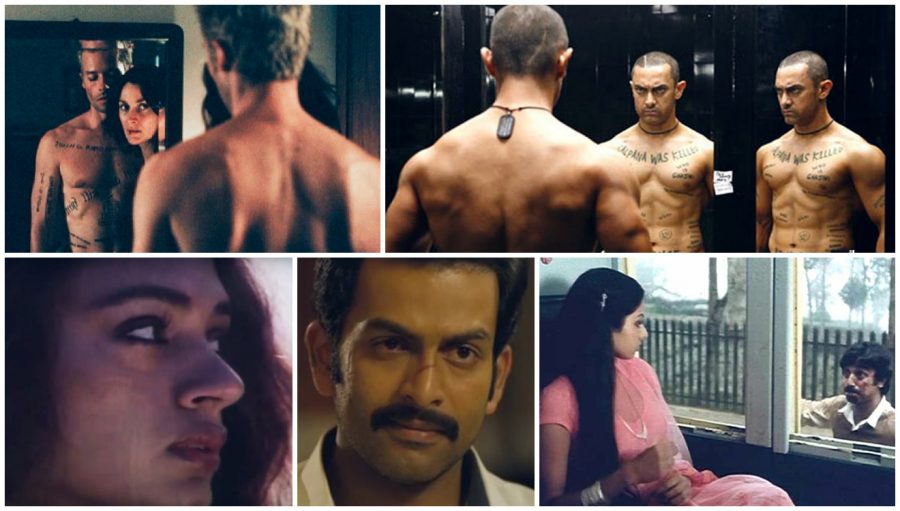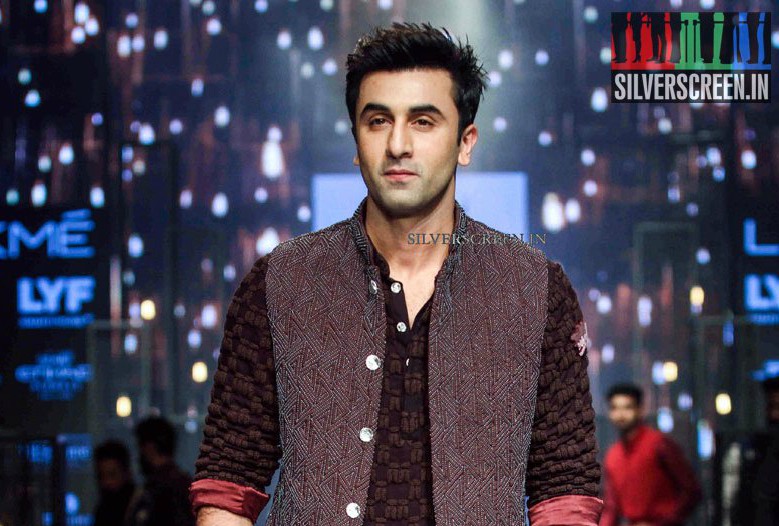On World Alzheimer’s Day, a look at movies – old and new – in which memory becomes a character, an invisible, compelling presence
Memory is a powerful plot device. Sometimes, it is the bridge that links two timelines, and during others, it makes for intense characterisations. AR Murugadoss’s Ghajini is perhaps the first Indian film that popularised memory loss as a plot idea, but older films like Innale (Padmarajan, 1990), Yaarana and Moondram Pirai dealt with a similar theme.
In Innale, a young woman has her memory wiped out clean, as if someone formatted a hard drive. Shobana plays a woman who lands in a hospital in a mountain village after being rescued from a fatal bus accident that killed all her co-passengers. There is no information of her identity, and there seems to be no way to find it. Her doctor, a kind lady, played by Sreevidya, takes care of her. She falls in love with the doctor’s son. This is similar to Aki Kaurismaki’s A Man Without A Past, where a man wakes up from sleep with no memory. He makes new friends, rents out a container home in a blue-collar area, finds a job at a charity organisation, and falls in love with a colleague. Both the characters – in Innale and A Man Without A Past – have reconciled with the fact that their memory is damaged. In both films, it is with social support that the characters lead a normal life. Their personalities do not undergo significant changes, and they are aware of the retrograde amnesia they are suffering from.
In Kamal Haasan’s Moondram Pirai, retrograde amnesia is used as a plot device for the sake of portraying a complex relationship drama. The authenticity of the disease is of little value in this film which was inspired by Balu Mahendra’s brief relationship with a much younger actress – Shoba – who committed suicide at the age of 18. A young woman, Bhagyalakshmi (Sreedevi), meets with a fatal accident that damages her brain. When we see her next, she has no memory of her past or even her name, and is with the intellect of a child. A man from Ooty, Sreenivas (Kamal Haasan), rescues her from a brothel where she is trapped in, and takes her to his village. He names her Viji. The relationship between this man and the woman who is more or less a child, that borders on romance, forms the premise of Moondram Pirai. According to Hari Narayanan of The Hindu, “In a moment of empathy or love, he (Sreenivas) takes a captive amnesiac back home, to his world, where he wants to perhaps preserve her as a painting, as a masterpiece. Where he wants to keep her not as much as an individual, but as a muse.” Later, Viji regains her memory, and re-assumes her original identity as Bhagyalakshmi. This return of memory cuts her off completely from Sreenivas, rendering him heartbroken.
Time and again, medical experts have written about how portrayal of amnesia in mainstream movies have little resemblance to the illness in real life. A BBC piece dated December 24, 2004, quotes researchers from the National Society for Epilepsy who point out three prime aberrations in the movies’ portrayal of memory loss. Sometimes, the characters affected with amnesia undergo complete personality changes – the ‘bad’ characters become ‘good’ with the onset of amnesia (like in Roshan Andrews’s Mumbai Police). In reality, amnesiacs’ personalities are rarely affected, says the BBC piece. One of the few instances in which cinema has accurately portrayed loss of memory is, according to experts around the world, in Christopher Nolan’s Memento which is about a patient of Anterograde Amnesia (the inability to store or recall new events and information, but have little effect on patient’s ability to remember events from their past). The genius filmmaker that Nolan is, didn’t limit the portrayal of amnesia to the film’s plot, but used cinematic possibilities to express how a patient suffering from memory loss sees the world. Memento‘s fragmented narrative and the noir lighting resemble the man’s broken memories and muddled thoughts.
Murugadoss’s Ghajini borrowed its story idea from Memento, but used a linear, uncomplicated narrative of a regular Indian masala movie. The lead man in the film, Sanjay, is suffering from a case of Anterograde Amnesia that makes it impossible for him to remember day to day events. Like Memento‘s Leonard, Sanjay uses Polaroid photographs and notes to keep track of his life. Unlike the usual nature of patients suffering from Anterograde Amnesia, Sanjay has no memory of his past, too. He doesn’t remember how the tragedy that damaged his brain happened and he has no memory of his life before the incident. All he has is a perfect six-pack body on which he has tattooed names and clues to his past, and a broken heart that he vehemently tries to avenge. Murugadoss’s film takes immense creative liberty in the portrayal of an amnesiac patient for the sake of entertainment. Unlike Memento, Ghajini isn’t interested in the complex nature of memories. It has its focus on the romance between the lead characters, which outlives the woman’s death.
In Prithviraj’s Mumbai Police, an accident wrecks the protagonist’s memory. When he recuperates, he begins life afresh, without any memory of his past. He has forgotten his friends, family and colleagues. The man, who had been a ruthless cop before, becomes a gentleman. A homosexual, he is appalled when his lover walks into his apartment and flirts with him. When he realises that he ‘might have been gay before’, he breaks down in tears. In spite of being memory-less, the man perfectly understands that homosexuality is perceived as a moral breach, and a crime in the society.
Partial memory loss is, in our cinema, mostly used as an excuse for humour. In the recent Malayalam film, Adventures Of Omanakkuttan, the titular protagonist is a young man searching for himself when he loses his memory temporarily after a taxi driver hits him on the head and steals all his documents. He is aware of his state of memory loss, unlike the man in Naduvule Koncham Pakkathe Kaanum, where a soon-to-be-groom, happily oblivious to his state of amnesia, gives a hard time to his friends who are attempting to cover up his predicament. Within a short period of time, these characters regain their memory.
Clinically, Alzheimer’s disease is different from amnesia, for the former is a degeneration of brain cells that results in permanent damage of memory. This irrecoverable nature of Alzheimer’s has inspired a number of tragic dramas. Blessy’s Thanmatra, starring Mohanlal, was an overtly sentimental tale of a family coping with the sudden attack of Alzheimer’s on the head of the household, a government officer who had been leading a very active life until then. It neglects the clinical troubles faced by the patient in favour of long-winded melodramatic sequences that showcase the distress of the people around him. In Mani Ratnam’s OK Kanmani, a much nuanced portrayal of Alzheimer’s can be seen, although it is not central to the film’s plot. Leela Samson plays Bhavani, a dance enthusiast and wife of Prakash Raj. Stricken with Alzheimer’s, she loses a little memory every day. The couple, one step at a time, prepares for the looming memory loss.
Reconstruction of memory
“Look, memory can change the shape of a room. It can change the colour of a car. And memories can be distorted. They’re just an interpretation. They’re not a record. They’re irrelevant if you have the facts.” – Memento (Christopher Nolan, 2000)
Of everything about memories that movies present to us, the most unrealistic is, perhaps, the use of flashback.
Rajkumar Hirani’s 3 Idiots begins as a first-person flashback narration by Raju, one of the three ‘Idiots’ in the film. He tells us about his time in the college where he met the other protagonist, Rancho. The portions of his life that the narrators have had no access to, are left ambiguous. In fact, throughout 3 Idiots, until its climatic portion, Rancho is a reconstruction of a collective memory. Such flashback narrations, anchored by a person close to the protagonist, help the audience relate to the character. Our commercial cinema has always used flashback narration freely and frequently to link two pieces of time, or to tie up the loose ends of a story.
Balu Mahendra made an entire film that unfolds as a flashback. Yathra (Journey) has Mammootty, a former prisoner, narrating his tragic love story to a group of school children and teachers. What testifies to his tale is a shot of his lover, played by Shobana, waiting for him at his destination, as she had promised, at the end of the film.
In Karan Johar’s Kuch Kuch Hota Hai, the love story between Rahul (Shah Rukh Khan) and Anjali (Kajol) that occupies the second half of the film is based on Tina’s (Rani Mukherjee) memory of their time together in college, in the form of diary notes. The film doesn’t doubt the authenticity of the notes, and does not take into account the fact that human feelings can undergo changes over the course of time. When we see Anjali next, her look has changed – from a tomboy to that of a sanskari saree-clad woman, but her feelings for Rahul are curiously intact.
For a long time, mainstream filmmakers confidently convinced the audience that the information that flashback sequences divulge, even when they are from a third person’s memory, is factual and objective. Only, it is not. Charlie Kaufman, the maverick writer, looked at memory as a physical space in Eternal Sunshine Of Spotless Minds. In Harry Potter’s universe, memory is stored as a mercury-like liquid in a store room, and characters can review memories in real time, for a more objective version of events.
The subjective and unreliable nature of memories was the core theme of Akira Kurosawa’s Rashomon, which is centered around the trial of a bandit who is alleged to have raped a beautiful woman and killed her samurai husband. Four different versions of the incident are presented to the audience as witness testimonies. The versions are conflicting, and influenced by the witness’s personalities and outlook.
In Raam Reddy’s Thithi, there is an extraordinary scene where the film’s lead character, Gaddappa, a bearded old man who has left his home to be a wanderer, sits by a campfire and narrates his life story to a group of shepherds. After recounting a bitter tale of adultery that tore his life apart, he says, “This happened so long ago. I am no longer able to say if this is real or a dream that I had last night.”
Rakshit Shetty’s Kannada drama Ulidavaru Kandante (As Seen By Others), is a story woven with many people’s recollections of a person’s life and death. In Ulidavaru Kandante, flashback versions do not conflict, but help the anchor, a journalist, looking to write a feature piece. The film is being remade in Tamil as Richie, with Nivin Pauly playing the lead. Shaji N Karun’s 2010 film, Kutti Srank, is a portrait of a man’s life as told by three women who claim to have known him in three different periods in his life. The women are visibly in love with him, and their words weave a mystical image of the man.
Recommended
In director Kamal’s Ulladakkam (1991), the past of Reshma (Amala Akkineni) is recounted through recurring images of a turbulent sea and a rocky seashore where her lover was murdered, with an image of him playing drums on a stage. We don’t know the details of their relationship, but these images that frequent her memory is a testimony to the intensity of her feelings for him. Her memory of him is fragmented and hazy, like how memories appear to most of us. The more she clutches onto those pieces of memory, the weaker they become.
The lyrics of the song ‘Pathira Mazhayetho’, talks about her desperation to hold on to them.
“എൻ്റെ ലോകം നീ മറന്നു
ഓർമ്മ പോലും മാഞ്ഞു പോകുവതെന്തേ”
[You have abandoned my world;
Now, your memories too, are fading away]
*****
World Alzheimer’s Day falls on September 21 every year. Patients diagnosed with Alzheimer’s have to bear the trauma of fading memory and gradual decrease in the ability to think coherently. In India’s huge elderly population, 1.6 million suffer from this disease, with not much awareness about early detection.



